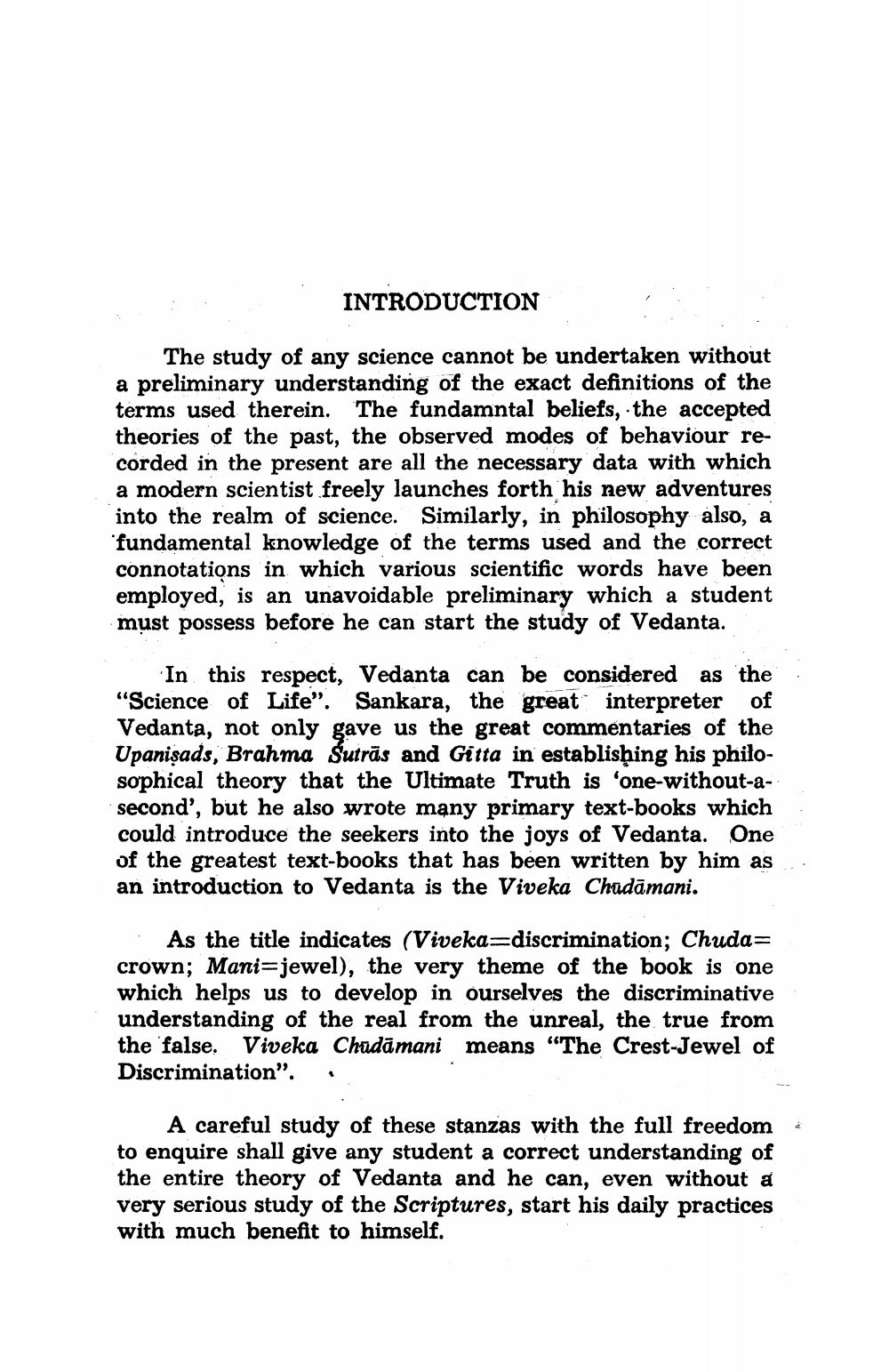________________
INTRODUCTION
The study of any science cannot be undertaken without a preliminary understanding of the exact definitions of the terms used therein. The fundamntal beliefs, the accepted theories of the past, the observed modes of behaviour recorded in the present are all the necessary data with which a modern scientist freely launches forth his new adventures into the realm of science. Similarly, in philosophy also, a fundamental knowledge of the terms used and the correct connotations in which various scientific words have been employed, is an unavoidable preliminary which a student must possess before he can start the study of Vedanta.
In this respect, Vedanta can be considered as the "Science of Life". Sankara, the great interpreter of Vedanta, not only gave us the great commentaries of the Upanişads, Brahma Sutrās and Gitta in establisþing his philosophical theory that the Ultimate Truth is 'one-without-asecond', but he also wrote many primary text-books which could introduce the seekers into the joys of Vedanta. One of the greatest text-books that has been written by him as an introduction to Vedanta is the Viveka Chudāmani.
As the title indicates (Viveka=discrimination; Chuda= crown; Mani=jewel), the very theme of the book is one which helps us to develop in ourselves the discriminative understanding of the real from the unreal, the true from the false. Viveka Chudāmani means “The Crest-Jewel of Discrimination". "
A careful study of these stanzas with the full freedom to enquire shall give any student a correct understanding of the entire theory of Vedanta and he can, even without a very serious study of the Scriptures, start his daily practices with much benefit to himself.




